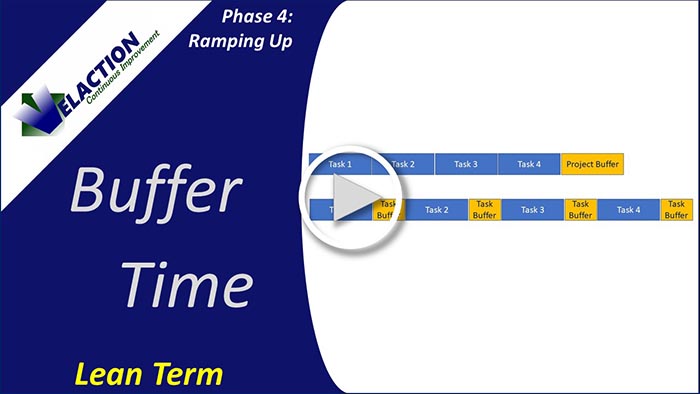Buffer Time
Buffer time, in project management, is the extra time added into a time estimate to keep a project on track. The purpose of this leeway in planning is risk management. It allows project managers to be able to account for unforeseen situations without having to change the coordination of a project in a major way.
This time may be officially designated as a buffer, or it may be built into tasks.

There are two general types of buffer time.
- Project buffer
- Task buffer
Project buffer time is the time that is added to the end of the project (or at various critical points along the way) that is managed by the project manager.
Task buffer time is specific to individual tasks along the way. Sometimes this form of buffer is officially reported to the project manager, but more often, it is embedded in the task time. For instance, an engineer may think that designing a new fixture will take four days, but reports five to give a little bit of buffer time to himself.
Project managers (PMs) prefer to have all the buffers consolidated. They want aggressive estimates from team members. Then the PM can parcel out the time wherever it is needed. This keeps the total project time down.
Team members, on the other hand, like to control their own buffer time so they don’t appear to be late on deliveries. The downside of this method is that Parkinson’s Law sneaks in and results in people using up the buffer time, or allowing scope creep to set in, when there is a bit of “extra” time.

Warnings About Using Buffer Time in Projects:
- Use buffers with care. People tend to operate differently when they have a safety net.
- If buffers are consistently high, look at your project planning process. If buffers are consistently used up, look closely at your project execution.
- A leader’s attitude towards delays is directly related to how much extra time people try to build into a task. If any delay is unforgivable and getting time back from the project buffer is like pulling teeth, then people will add more time to their estimates.
![]()
Being good at continuous improvement requires that teams have the skills to manage projects effectively. Because kaizen activity builds off previous projects, timely delivery is important. To improve your team’s ability to deliver steady results, track your buffer time estimates and usage.
Each time they are different from what you expect, look for the root cause. Then work to systematically eliminate the issues that make your improvement projects hard to deliver on time and you’ll be able to accelerate the pace of improvement.



0 Comments